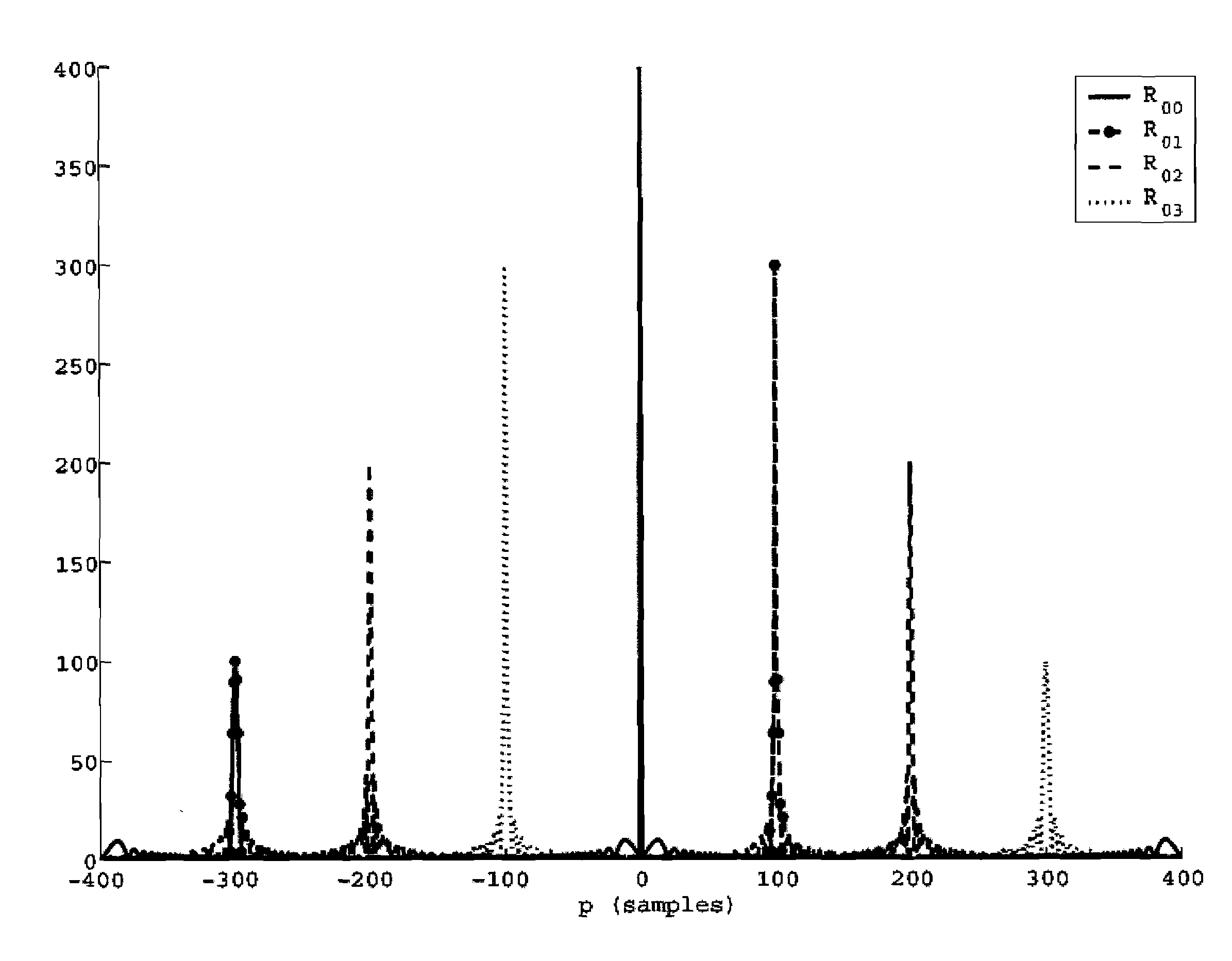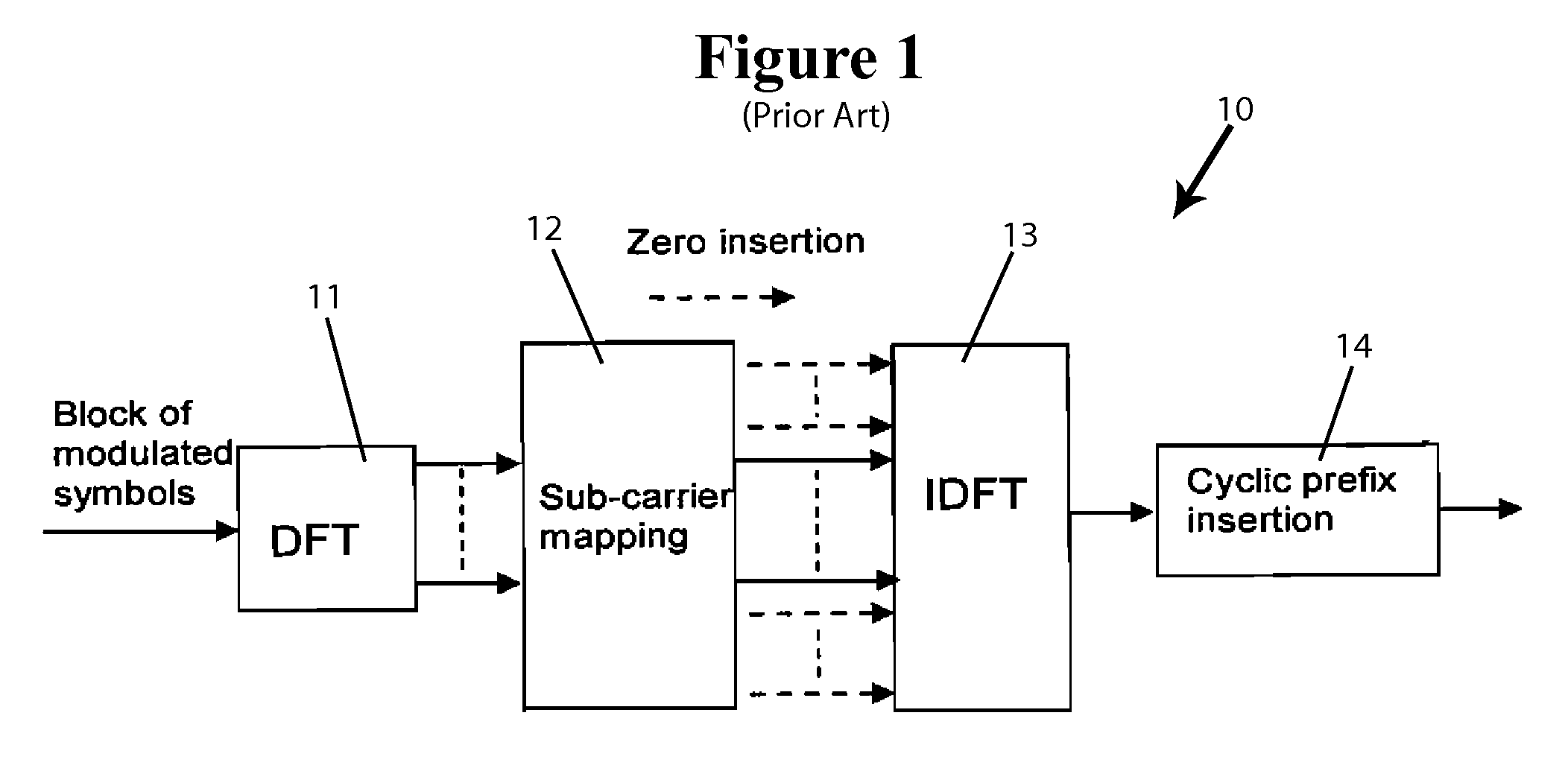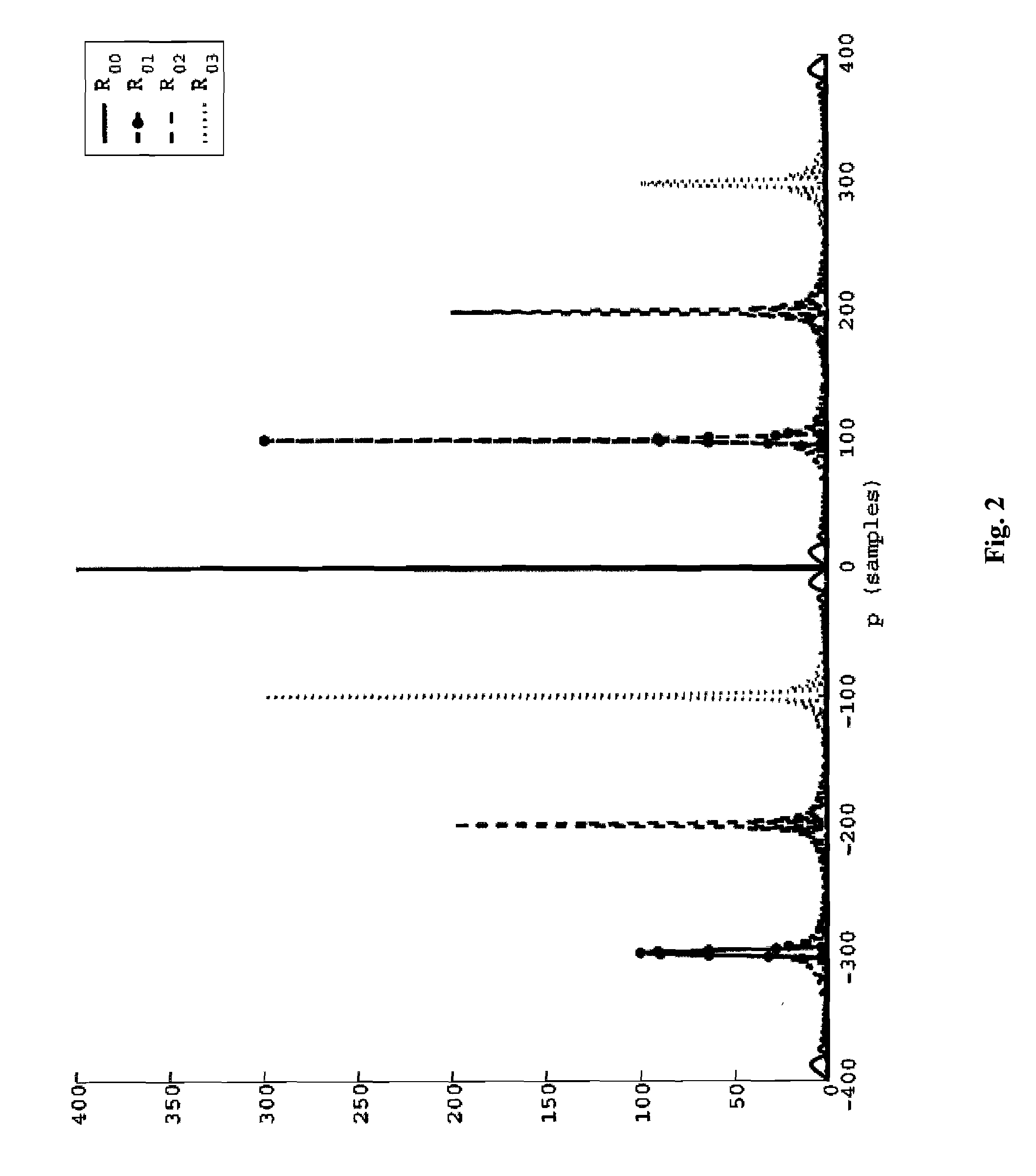Method and system for synchronization in communication system
a communication system and communication system technology, applied in the field of radio communication systems, can solve the problems that the synchronization is not sufficient to ensure the proper functioning of the base station, and achieve the effects of small peak-to-average power ratio, good cross-correlation properties, and good autocorrelation properties
- Summary
- Abstract
- Description
- Claims
- Application Information
AI Technical Summary
Benefits of technology
Problems solved by technology
Method used
Image
Examples
Embodiment Construction
[0023]The present invention will now be described more in detail in relation to a communication system employing DFT-spread OFDM.
[0024]In FIG. 1 is shown a basic transmitter 10 for DFT-spread OFDM. Blocks of M complex modulated symbols xn, n=0, 1, . . . , M−1, are transformed by a DFT 11 which results in M coefficients Xk:
Xk=∑n=0M-1xn-j2πnkM,k=0,1,…,M-1.(1)
[0025]The output from the DFT is mapped by a sub-carrier mapping module 12 on equidistant sub-carriers lk=l0+kL, where l0 is a frequency offset, and L is an integer larger than or equal to 1. All other inputs to the N-point Inverse Discrete Fourier Transform (IDFT) are set to zero.
[0026]The output of the IDFT 13, yn, is given by
yn=1M∑k=0M-1Xkj2πnlkN,n=0,1,…,N-1(2)
Finally, to avoid inter-symbol interference (ISI) and inter-channel interference (ICI), a cyclic prefix inserter 14 inserts a cyclic prefix, i.e., a copy of the last portion of each OFDM symbol is inserted before the beginning of the same symbol. A time window may be appl...
PUM
 Login to View More
Login to View More Abstract
Description
Claims
Application Information
 Login to View More
Login to View More - R&D
- Intellectual Property
- Life Sciences
- Materials
- Tech Scout
- Unparalleled Data Quality
- Higher Quality Content
- 60% Fewer Hallucinations
Browse by: Latest US Patents, China's latest patents, Technical Efficacy Thesaurus, Application Domain, Technology Topic, Popular Technical Reports.
© 2025 PatSnap. All rights reserved.Legal|Privacy policy|Modern Slavery Act Transparency Statement|Sitemap|About US| Contact US: help@patsnap.com



